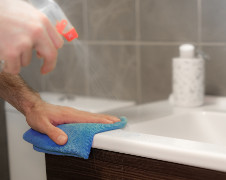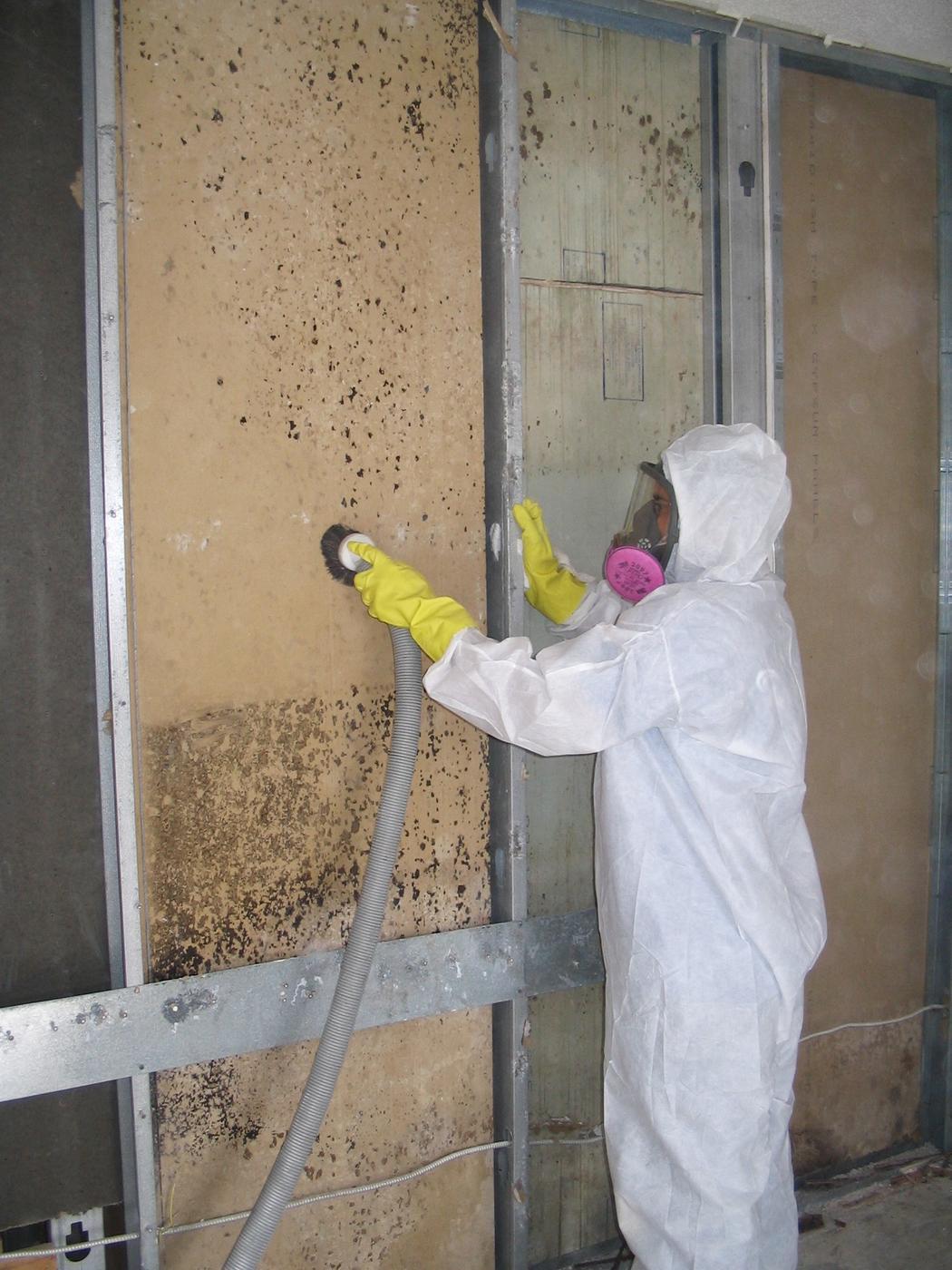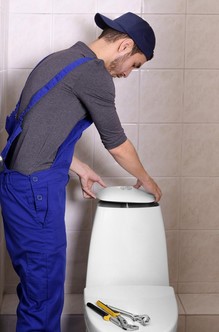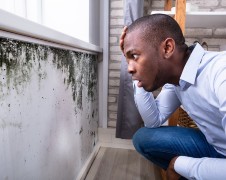Can I Use Bleach For Bathroom Mold Removal?
Bathroom Mold Removal: Killing Mold with Bleach
If you're thinking about killing mold with bleach for bathroom mold removal, you may want to think again. According to the United States Environmental Protection Agency (EPA), a biocide like chlorine bleach is a substance that should be used to destroy living organisms, but when it comes to killing mold  with bleach for bathroom mold removal, the use of a biocide is not recommended for routine practice during mold cleanup because bleach will not kill the mold entirely. Molds have roots (hyphae) and bleach's ion structure stops chlorine from penetrating porous materials, therefore when you spray all the chemicals are going to stay on top of your surface while the water part of the solution just soaks through. Simply put, bleach will make the color go away. Not the mold.
with bleach for bathroom mold removal, the use of a biocide is not recommended for routine practice during mold cleanup because bleach will not kill the mold entirely. Molds have roots (hyphae) and bleach's ion structure stops chlorine from penetrating porous materials, therefore when you spray all the chemicals are going to stay on top of your surface while the water part of the solution just soaks through. Simply put, bleach will make the color go away. Not the mold.
The EPA explains, "In most cases, it is not possible or desirable to sterilize an area; a background level of mold spores will remain, but these spores will not grow if the moisture problem has been resolved. If disinfectants or biocides are used, always ventilate the area and exhaust the air to the outdoors. Never mix chlorine bleach with other cleaning solutions or with detergents that contain ammonia because toxic fumes could be produced."
A More Effective Way of Killing Mold
Now that you understand why killing mold with bleach is a myth for bathroom mold removal, let's talk about something that is a bit more effective ... like vinegar. Straight vinegar kills about 82% of mold spores and will help prevent future mold if you spray it on the surface and allow it to dry. Because the odor vinegar gives off is a bit strong, and not ideal for most, some people will mix in essential oils in their vinegar spray - like tea tree oil and grapefruit extract.
Call AdvantaClean for 24/7 Emergency Services
Is Mold Affecting Your Health?
Don't wait till it is too late, AdvantaClean can help, request a service appointment today!
What's More Effective than 82%?
 Instead of trying for killing mold with bleach for bathroom mold removal, or using your at-home vinegar remedy, you might want to consider leaving it to the professionals.
Instead of trying for killing mold with bleach for bathroom mold removal, or using your at-home vinegar remedy, you might want to consider leaving it to the professionals.
The point of mold remediation is to remove the mold in your bathroom in order to prevent human exposure and damage to your home's building materials and furnishings. It is necessary to clean up mold contamination, not just to kill the mold. After all, dead mold is still allergenic, and some dead molds can be potentially toxic.
There are several different methods used for mold remediation as an alternative to killing mold with bleach for bathroom mold removal. HEPA (High-Efficiency Particulate Air) vacuums are typically used for the final cleanup of remediation areas after materials have been thoroughly dried and contaminated materials removed. HEPA vacuums are also used for the cleanup of dust that may have settled on surfaces outside the remediation area. Mold remediation professionals will take measures during bathroom mold removal to assure that the filter is properly seated in the vacuum so that all the air must pass through the filter. When changing the vacuum filter, remediators will wear PPE to prevent exposure to the mold that has been captured. The filter and contents of the HEPA vacuum will be disposed of in well-sealed plastic bags.
Building materials and furnishings that are contaminated with mold growth and are not salvageable should be double-bagged using 6-mil polyethylene sheeting. These materials can then usually be discarded as ordinary construction waste. It is important to package mold-contaminated materials in sealed bags before removal from the containment area to minimize the dispersion of mold spores throughout the building. Large items that have heavy mold growth should be covered with polyethylene sheeting and sealed with duct tape before they are removed from the containment area.
Preventing Mold (and Other) Problems in the Bathroom
- Inspect your toilet for leaks. Look for wet areas on and around the toilet, as well as on the water line that connects the toilet to the wall. If you notice any leaks, call a plumber as soon as possible. Leaks can hike up your water bill, damage your home, and foster mold growth.

- Test for leaks with food coloring. Add six or seven drops of food coloring to your tank and let it sit for 30 minutes. Then check your toilet bowl and see if the water has changed color. If it has, you've got a leak. Call a plumber right away!
- Don't use your toilet as a garbage can. Avoid flushing paper towels, feminine products, cleaning wipes, or anything other than toilet paper.
- Check the water shut-off valve. This is the knob attached to the wall or floor that shuts off the water supply to your toilet. Just turn the knob to make sure it is still turnable. If it is resistant or won't budge, it may be faulty and in need of professional maintenance.
- Make sure the fill valve is working properly. Lift the lid to your tank and flush the toilet. Make sure that the after the tank has refilled, the fill valve completely stops dispensing water. If it doesn't, give us a call! Our highly-skilled plumbers will promptly diagnose and fix the problem.
If you spot mold, or see signs of water damage due to your septic tank backup, schedule a mold inspection and remediation with a MICRO-certified mold remediation specialist or water damage specialist to assess any and all damage.
More info? For more information on where mold comes from, read our post: Identify Mold and Mildew in Your Home.

